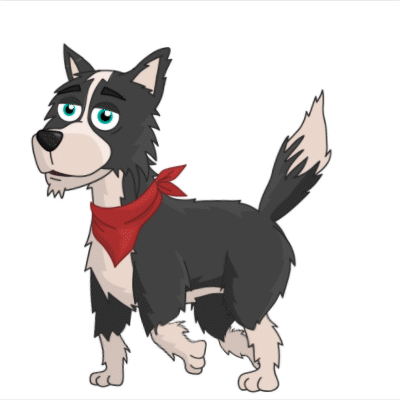
We recently released the Toon Loons – Cats + Dogs. Six quadruped puppets added to the Toon Loons family of puppets.If you haven’t already make sure you check them out!
Adjusting and working with a quadruped walk is a little different to a bipedal walk. It is a bit of a cheat, but works really well when done properly.
When rigging a quadruped puppet the front two legs are rigged the same way a bipedal puppet is rigged.
The back legs are where the difference occurs. This is also where a lot of puppet builders make a rookie mistake. You have to rig the back legs, back to front! So the BACK RIGHT LEG needs to be rigged as a LEFT LEG. And the BACK LEFT LEG needs to be rigged as a RIGHT LEG.
This can all get confusing – but what happens is when your puppet walks, the back left leg takes a step at the same time as the front right leg (and vice-versa). If both the legs on the left side took a step at the same time, the character would fall over. That’s why a quadruped rigged incorrectly looks weird. It’s defying gravity!
In Adobe Character Animator, those two back legs also need to have their own walk behaviour added. This can make adjusting the walk a bit confusing (and why we made this tutorial for you).
A left and right walking quadruped has five walk behaviours applied to it. The top level walk behaviour controls the two front legs (left and right) as well as the Body Speed of the whole puppet.
The four back legs (two for left and two for right) have a body speed setting of 0%.
All the other settings need to be applied to all five behaviours consistently.

ADJUSTING THE QUADRUPED WALK
With bipedal puppets, adjusting the walk is much easier. In RIG mode, you just select the puppet and then adjust the behaviour – you can even adjust the behaviour in RECORD mode and send the settings back to the original puppet.
[If you haven’t already, make sure you check out our tutorial on bipedal walking here]
With Quadruped puppets we use the top level behaviour to set the body speed. So if you select the name of your puppet (in my case VENUS), and look over to screen right you should see the walk behaviour.
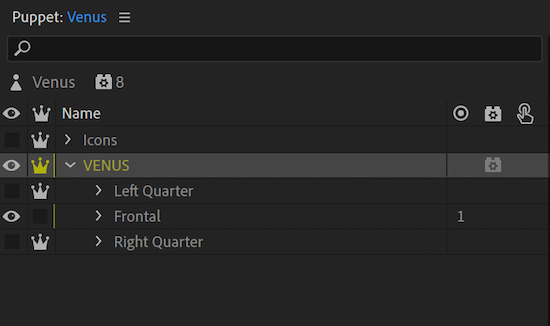
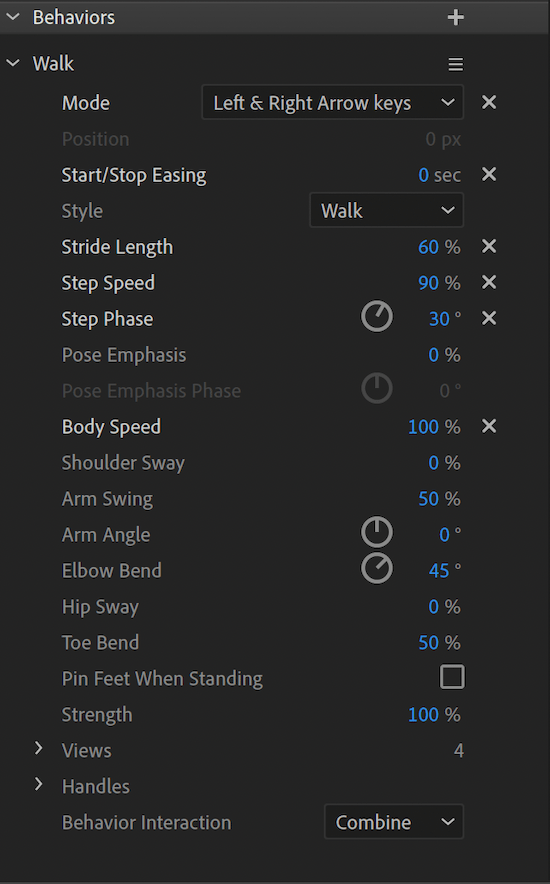
We can see the current Body Speed is set to 100%. If you change this to 0% your puppet will walk on the spot. Walking on the spot is great to use if you want to adjust your puppets walk (so it doesn’t wander off screen while you make adjustments). It is also great for a scrolling background.
Unfortunately we can’t use the Position Based setting when we apply a quadruped walk to an animation. This is because we have multiple instances of the walk behaviour applied. So we we will use the ‘Left and Right Arrow Keys’ setting. We will cover setting the walk on the timeline after we discuss adjusting the walk.
If we want to adjust things like Stride Length, Step Speed and Step Phase – we have to do that both at the top level and on those back legs.
You can do that by taking note of the settings you change at the top level and then reapply them to each back leg – or a quicker way is to collapse down your two walk views (Left Quarter and Right Quarter) open both Body Layers and Shift select the top level puppet and the two back legs in the Right Quarter and the two back legs in the Left Quarter views.
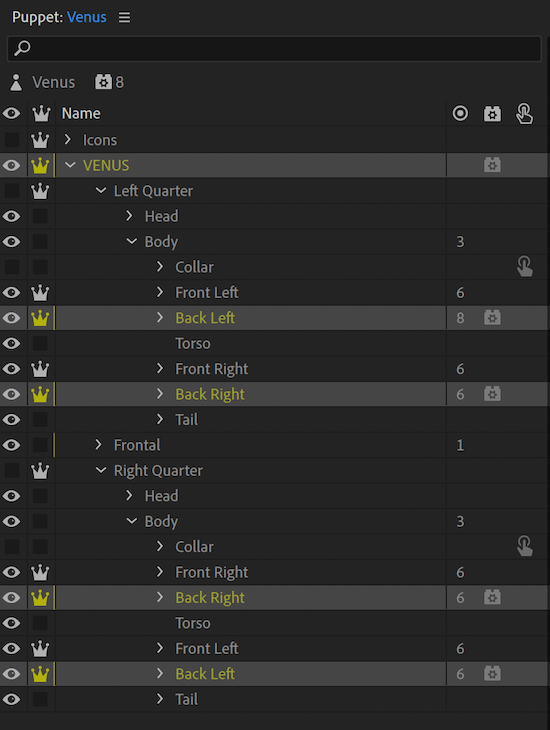
If you look next to Body Speed you will notice that it has a dash instead of a specific value. This occurs when the setting has multiple values applied. We want the body speed set at 100% at the top level. And we want the body speed set to 0% at the back leg level.
If you set the leg level body speed to 100% the leg would start walking off on it’s own because it would have two lots of body speed affecting it.
So the little dash is what we want there.
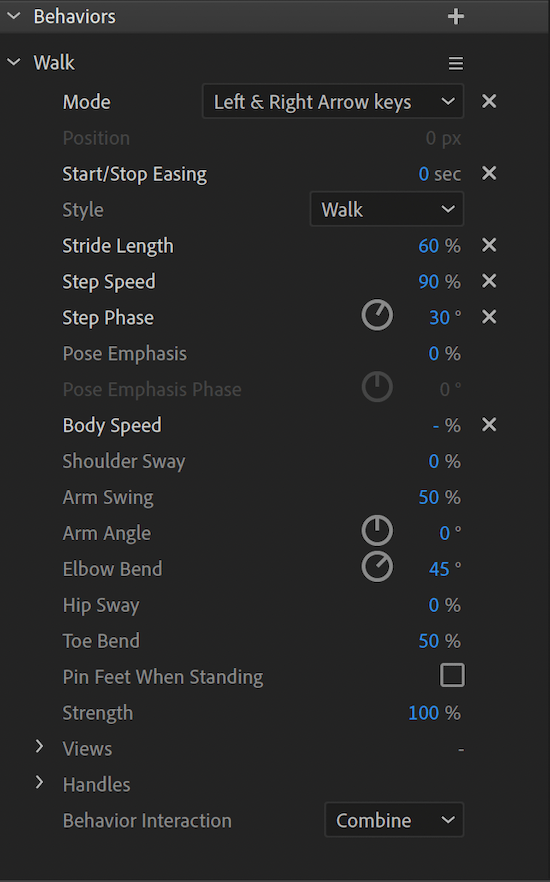
Now, you can play with the other settings. They are all pretty self explanatory. Stride Length is how far each step stretches out. Step speed is how quickly the puppet takes each step. Step Phase is a fun setting that will pause in-between each step.
The Step Phase was kept at 0% for the dog puppets, and was set to 30% for the cats – as cats have a more rhythmic walk.
Try increasing that to see a more exaggerated walk-pause.
In the previous tutorial on walking, we discussed the problems with animating with Left and Right Arrow keys . Basically, when you record a walk and play it back, the puppet can end up in odd places if you don’t keyframe properly. In that tutorial we explained why that happens and how to address it. We also mentioned our preferred alternative – using the Position Based setting.
Because Quadruped walk uses a workaround – we can’t use position based. When you try to apply it it will leave those back legs standing in the middle of your screen.
So again, what we want to do is make sure we set that start keyframe.
To do that, make sure you are at the start of the timeline.
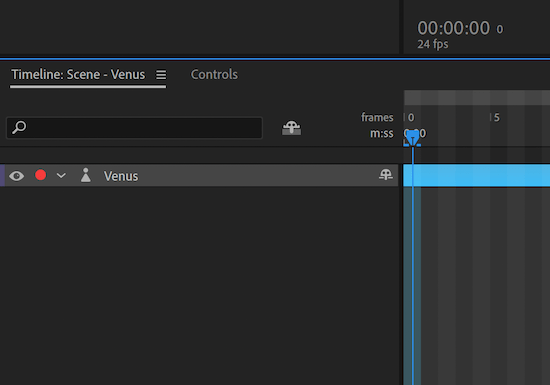
Now, look over to screen right. We want to open the Transform Behaviour. Now hover your mouse to the left of Position X. You should see a little stopwatch icon. If you press this it will set a keyframe.
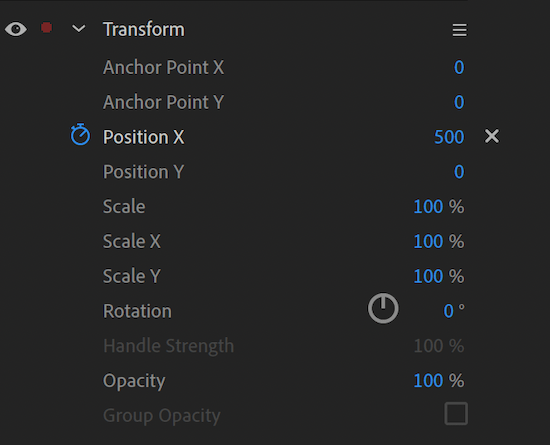
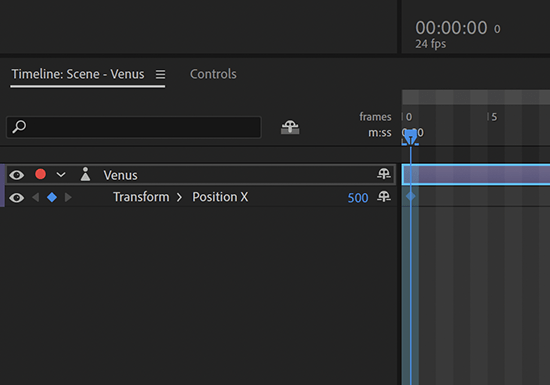
Now change the value to 500. Your puppet should move to screen right by 500 pixels. Try 1100. Your puppet should disappear off screen. Now Hit record and hold the left arrow button. Your puppet will now walk across screen. Keep holding as long as you require your puppet to walk.
If you didn’t set this start position – every time your animation started your puppet would jump to the default middle position.
CONCLUSION
In this tutorial we have looked at the workaround for the quadruped walk. We have gone over how these puppets are rigged. How to adjust the body speed and how to adjust the walk settings. Then we went over how to set a start keyframe to best use the Left and Right Arrow Keys Mode.
We aren’t done with walking just yet. Coming soon will be the final chapter in walking in Adobe Charaacter Animator – so stay tuned!
ElectroPuppet acknowledges the traditional custodians of the land, the Gumbaynggirr people.
We pay our respects to their elders, past, present and emerging.